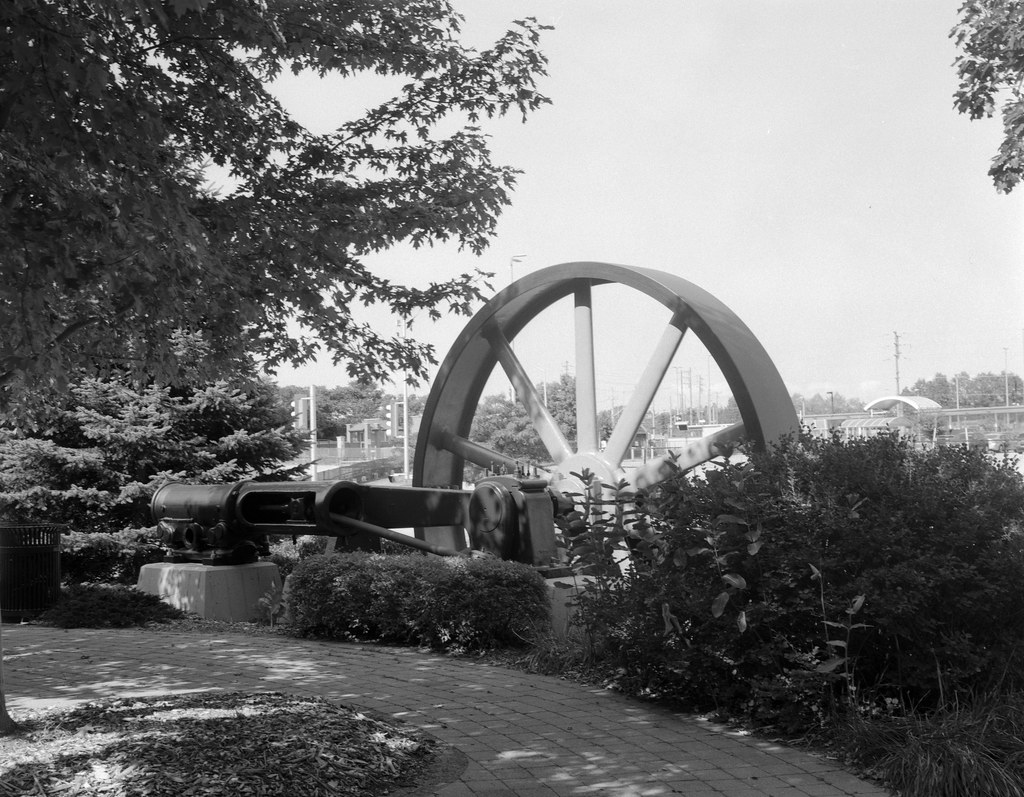Upper Canada provided a wealth of raw materials for the merchant barons in Montreal. In addition to supplying the needs for colonising the province, the vast forests supplied lumbers that would go over to England to provide materials for constructing the mighty warships of the Royal Navy. Agriculture fed the growing population and the armies of England. But the preparation of these two things required mills. In addition to the shipyards, some of the earliest businesses in Oakville were mills.

Running water was the best source of power for the first mills in the region. A lot with a water source provided not only irrigation for farming, it also could supply power to a mill. These first mills were often built from wood with stone foundations; a dam, mill race and even a mill pond were constructed to help regulate and maintain a specific flow to keep the wheel moving to drive the machinery within. Sawmills could cut raw timber into lumber, and grist mills ground down wheat into useful flour. With these two, secondary industries sprung up, blacksmiths, distilleries, and shipyards. The first noted mill in the township opened in 1810, Phillip Triller established a mill near Upper Middle Road, and George Chalmers established a mill on Sixteen Mile Creek in 1827, operating both a grist mill and a sawmill. William Chisholm’s sawmill opened in 1828 to support his shipyard and was located north of the harbour in downtown Oakville. Hiram McCranney opened a mill in 1831 south of Upper Middle Road. Chisholm also opened a second mill further north on the Sixteen at Speers Road in 1838, the same year that Thompson Smith opened another mill. By the middle of the century, some fifteen mills were operating through the township. It also brought about a new means of powering mills, stationary high-efficiency steam engines could power mills without the need for a significant source of water power. Soon these mills were operating in Postville, Palermo and Bronte. But the collapse of the grain trade soon closed up many of these early industries, but others quickly took advantage of the shift in the economy. Foundries were still valuable, along with distilleries; the shipyards though significantly reduced, continued to build ships and then yachts. And a large tannery also operated in Oakville’s downtown. Fruit growing became popular, and the rich soil and room allowed strawberry and other fruit farms to establish themselves. And in the case of Chisholm 1838 mill, it converts to a new form of production. John Cross and Charles Chisholm began to experiment with the production of baskets, and both quickly opened basket manufacturing businesses. The old Chisholm mill became home to the Oakville Basket Company and could use the old sawmill equipment, now driven by steam, to turn raw timber into baskets. The company operated on steam until 1967 and electricity until they closed in 1984.
Today there are plenty of these early mills preserved and displayed in Ontario. But in Oakville, none are left standing. I had seen this massive drive wheel many times but never actually stopped to look at it closely. Thankfully, this project helped give me an excuse. It is the only surviving physical evidence of the milling in Oakville. Although it was used for basket making, it remained connected to William’s 1838 mill. It also proved a difficult shot to capture. I metered for the shadows using my 150mm lens and a shallow depth of field. Even under-exposing by a stop, I knew my highlights would be blown out, but they were in the out-of-focus areas anyways, so it did not matter. And being under open shade indeed helped ensure the drive wheel was in focus and properly exposed.